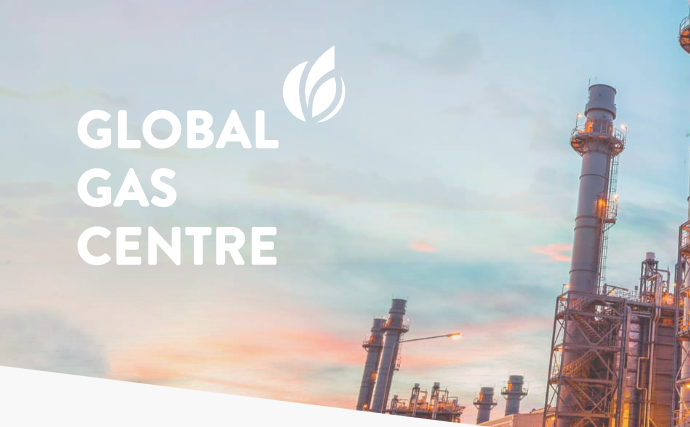This joint webinar hosted by the GGC and AGN of Chile held to coincide the recent membership of the AGN to the Centre. The timing of the webinar was poignant as it also marked a full month since the invasion of Ukraine by Russia- an event that has potentially crippling implications to the global gas markets in general and European gas markets in particular.
Yet, the issue foremost in the industry thinking is not just around the short/medium term impact on energy/gas pricing but also hanging in the balance on the future course of the energy transition. Would these developments pose a showstopper for the policy makers engaged in the energy transition? What are the long term strategic implications for gas companies in Europe and what might be useful lessons to learn for the gas companies outside Europe that are embarking on similar gas based energy transitions?

The meeting started with an opening scene setting presentation by Arno Büx, of Fluxys; on the global gas and LNG market developments against the backdrop of rising energy prices globally. He then narrowed down to exploring some key aspects of the European energy transition which formed the basis for the discussion on the relevance of these developments in the wider Latin American region and the Chilean gas market in particular. The following important insights emerged:
1. Global scan of markets reveals a growing demand and an emerging supply gap in the international gas/LNG markets till at least 2027. The biggest impact will be in Europe if the share of Russian gas supply is required to be substituted.
2. There is little evidence so far that European Energy transition, driven by policies developed by the EU in consultation with member states, will be paused in its tracks. Indeed, the messaging from the European Commission appears to be greater ambition and more rapid energy transition and not the opposite. A number of instruments to enable this, e.g. EU Taxonomy, EU Emission Trading Scheme, etc, are well in place, though the challenges are not insignificant.
3. European experience still offers considerable insights for the Chilean natural gas industry which grew against a backdrop of a similar gas security crises in the early 2000’s. The levers that Europe deployed in its energy transition- the coal-gas switch, energy efficiency programmes and developing LNG terminals infrastructure to connect with international gas markets- all apply in the Chilean context.
The remainder of this report briefly captures the discussions that followed the presentations by the GGC representatives:
EU Taxonomy: Alexander Barnes, Advisor GGC
• EU Taxonomy provides the basis for reporting and classification as to what constitutes “sustainable investment” and underpins all future energy related investments in the EU
• The recent (February 2022) Complementary Delegated Act which now seeks to bring natural gas and nuclear in its ambit is yet to be approved by the EU Parliament and the EU Council. This is an important step required to be achieved.
Implications of a Gas Phase-Out in Europe: Ashutosh Shastri, Senior Advisor GGC
• The energy transition glidepath to Net Zero by 2050 is looking increasingly challenging, especially against the backdrop of the recent attacks on Ukraine. The ratcheting up of the ambition in the recent EU Report “Repower Europe” from the ambitious report previously released in late 2020 – “Fit for 55”- now appears even more challenging.
• The EC appears to have identified Hydrogen as a fuel of the future and a groundwork for development of the hydrogen infrastructure and its regulation appears to be taking shape. There is a cautionary tale, again, on picking winners. The house view being that green hydrogen (hydrogen production using the electrolyser route) being already picked as a “technology winner”.
• The EU energy transition programme cannot be seen in isolation. What started with the EU electricity and gas market deregulation and reform has delivered much of the platform from which an energy transition has been successfully launched for developing markets around the world, Latin America and Chile included. This provides an established set of good practices and precedents, e.g coal gas switch, energy efficiency and diversifying gas procurement appear to be the right priorities adopted in Chile based on the European experience.
From Methane to Hydrogen: Making the transformation happen: Arno Büx, Fluxys
• Belgium’s gas network is well developed and suited for repurposing to the Hydrogen network. A number of technological issues relating to gas composition and blending have been successfully developed and deployed commercially. The regulation relating to hydrogen infrastructure is still nascent and will require to progress. This however is likely to be a smooth process given the EU experience with successfully developing the gas market regulations recently.
• By 2023 Fluxys will be ready from technical, regulatory and commercial perspectives for 2% Hydrogen blending in its network and is getting prepared for a 10% blending for the future. This however will require the regulatory aspects in Europe to be able to keep the pace.
• An update was provided on one of the flagship projects, The HyOffWind, which should be ready commercially for 2024. It will prove to be an important project reference for future evolution of the Hydrogen-Natural Gas Infrastructure interface.
***
Ashutosh Shastri
Senior Advisor, Global Gas Centre






